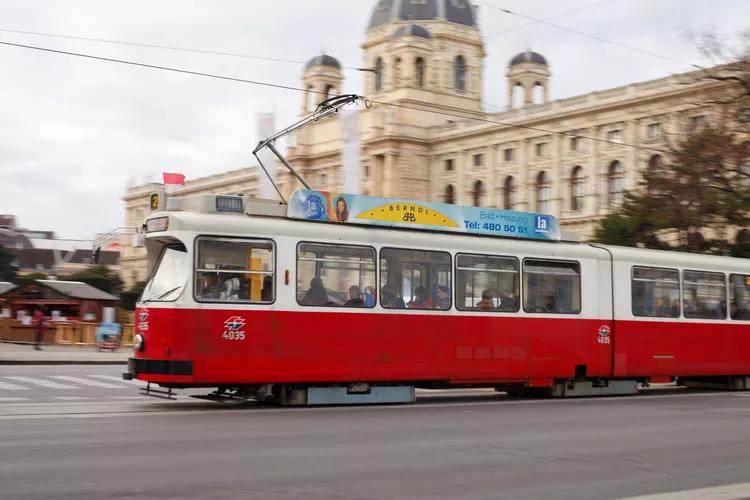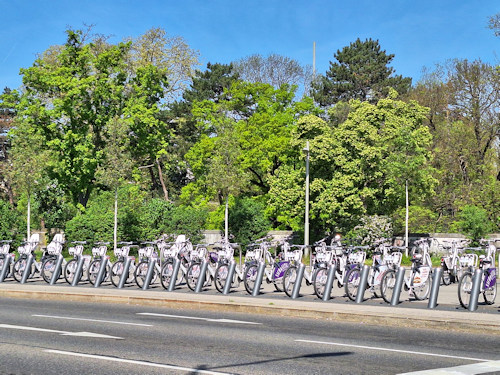Getting Around Vienna: A Comprehensive Guide to Transportation

Vienna, Austria’s capital, boasts one of the most efficient and well-connected public transportation systems in Europe. Whether you’re a tourist visiting for the first time or a local resident, navigating the city is convenient, safe, and relatively affordable. Here’s a detailed overview of the various transportation options available in Vienna:
1. Vienna’s Public Transport Network (Wiener Linien)
Overview:
Vienna’s public transport system, operated by Wiener Linien, includes subways (U-Bahn), trams (Straßenbahn), buses, and commuter trains (S-Bahn). The network is comprehensive, covering the entire city and its suburbs, making it easy to get around without a car.
- U-Bahn (Subway): Vienna’s subway system consists of 5 lines (U1, U2, U3, U4, U6) and operates from around 5 AM to midnight, with extended services on weekends. The U-Bahn is the fastest way to travel across the city, connecting major attractions, shopping districts, and residential areas.
- Trams: The tram network is one of the largest in the world, offering both old-world charm and modern convenience. Trams are a scenic way to travel, with lines running through many picturesque parts of the city. They are particularly useful for short-distance travel and sightseeing.
- Buses: Complementing the U-Bahn and tram networks, buses provide access to areas not covered by rail. Night buses are also available to ensure safe travel after midnight, particularly on weekdays when the U-Bahn is not running.
- S-Bahn (Suburban Trains): The S-Bahn connects Vienna with its suburbs and surrounding regions, including the Vienna International Airport. It’s ideal for travelers looking to explore areas outside the city center or commute to nearby towns.
Tickets and Pricing:
Tickets for Vienna’s public transport can be purchased at ticket machines, via mobile apps, or from tobacconists. A single ticket is valid for all forms of public transport within the city. Popular options include:
- Single Ride Ticket: €2.40
- 24-Hour Ticket: €8.00
- 48-Hour Ticket: €14.10
- 72-Hour Ticket: €17.10
- Weekly Pass (Monday-Sunday): €17.10
- Monthly and Annual Passes: Available for frequent travelers
Tickets must be validated before boarding. Discounts are available for children, students, and seniors.
Tags: #ViennaTransport #WienerLinien #UBahnVienna #ViennaTrams #ViennaBuses #ViennaSBahn
2. Vienna City Card
The Vienna City Card is a fantastic option for tourists. It offers unlimited travel on all public transport for 24, 48, or 72 hours, along with discounts on various attractions, tours, and restaurants. This card is especially useful for those looking to explore Vienna’s sights comprehensively while enjoying savings on entry fees.
Tags: #ViennaCityCard #ViennaTourism #TravelVienna
3. Taxis and Ride-Sharing Services
Taxis:
Taxis are readily available throughout Vienna, either at designated taxi stands, hailed on the street, or via phone apps. Taxis are more expensive than public transport but provide door-to-door service, which is convenient if you are carrying heavy luggage or traveling late at night.
Ride-Sharing Services:
Apps like Uber, Bolt, and Free Now operate in Vienna, providing an alternative to traditional taxis. These services are generally cheaper than taxis and offer various vehicle options to suit your needs. The app-based service also allows for easy payment and tip options.
Tags: #ViennaTaxi #UberVienna #RideSharingVienna #TravelVienna
4. Cycling in Vienna
Vienna is a bike-friendly city with a growing network of bike lanes and paths. Cycling is an excellent way to explore the city, especially during the warmer months.
- Citybike Wien: Vienna’s public bike-sharing program, Citybike Wien, allows you to rent bikes from over 120 stations across the city. The first hour is free, making it an economical option for short trips.
- Bike Rentals and Tours: Many companies offer bike rentals and guided bike tours,









